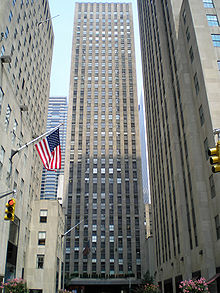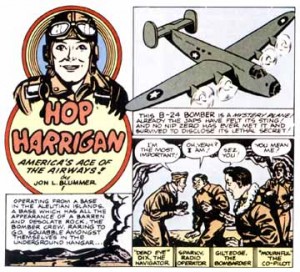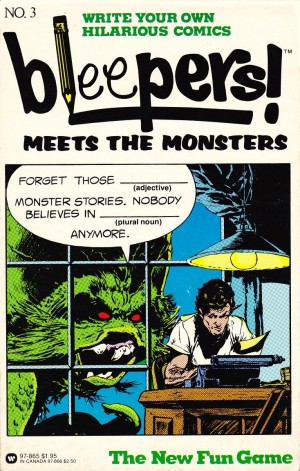 On Friday, DC Comics closes its doors in New York City, completing the lengthy relocation of core staff and operations to Burbank. I’ve been watching from afar, disappointed I couldn’t arrange a final trip north to make a final visit. Instead, I’ve been watching friends and former colleagues posting current pictures of the packing process along with nostalgic images from across the years.It feels me with sadness as it physically separates me from a company that I have felt emotionally distanced from for the last few years. I grew up with Superman and the other heroes as significant influences in my life. Getting to work there in the summer of 1980 was a dream come true. I’ve written about this before and collected other oral memories for the 20-page tribute to the DC offices coming this month in Back Issue! #80.I had been hired as an act of charity by Paul Levitz. My job at Starlog Press wasn’t scheduled to begin until September but upon graduating that May I needed some way to make a few bucks. After all, I was getting married in October and had to start furnishing an apartment. He needed someone to start building a property catalogue as DC was taking full control of their foreign rights after Carroll Reinstrom, who had the business for decades, was retiring. Yes, I was going to be paid to sit in the fabled DC Comics library and read comic books all summer. I was thrilled to be walk-in from Penn Station to 75 Rockefeller Plaza, entering the corporate offices and walking where legend worked and visited.DC was just recovering from the Implosion of 1978 and was slowly building the line. As a result, each morning started with me being given the day’ arriving artwork to copy. Once pages were penciled and lettered, I was tasked with making full-size copies for filing, so should something happen to them en route to the inker, we had something to work from. These “XPL” copies were then filed for months. Often, older copies were raided to sample would-be inkers and eventually purged.
On Friday, DC Comics closes its doors in New York City, completing the lengthy relocation of core staff and operations to Burbank. I’ve been watching from afar, disappointed I couldn’t arrange a final trip north to make a final visit. Instead, I’ve been watching friends and former colleagues posting current pictures of the packing process along with nostalgic images from across the years.It feels me with sadness as it physically separates me from a company that I have felt emotionally distanced from for the last few years. I grew up with Superman and the other heroes as significant influences in my life. Getting to work there in the summer of 1980 was a dream come true. I’ve written about this before and collected other oral memories for the 20-page tribute to the DC offices coming this month in Back Issue! #80.I had been hired as an act of charity by Paul Levitz. My job at Starlog Press wasn’t scheduled to begin until September but upon graduating that May I needed some way to make a few bucks. After all, I was getting married in October and had to start furnishing an apartment. He needed someone to start building a property catalogue as DC was taking full control of their foreign rights after Carroll Reinstrom, who had the business for decades, was retiring. Yes, I was going to be paid to sit in the fabled DC Comics library and read comic books all summer. I was thrilled to be walk-in from Penn Station to 75 Rockefeller Plaza, entering the corporate offices and walking where legend worked and visited.DC was just recovering from the Implosion of 1978 and was slowly building the line. As a result, each morning started with me being given the day’ arriving artwork to copy. Once pages were penciled and lettered, I was tasked with making full-size copies for filing, so should something happen to them en route to the inker, we had something to work from. These “XPL” copies were then filed for months. Often, older copies were raided to sample would-be inkers and eventually purged. Karen Berger, then Editorial Coordinator, would open the arriving packages or work delivered by local talent, and then pass the stack to me. The copier was located in a bullpen room with a few drawing tables. By day, artists like Bob Smith would come in and do some work or make some corrections or a colorist like Adrienne Roy would color pages to make a deadline. Around 4 every afternoon, Ben Oda, with his oversized portfolio would come in and set up shop. He’d deliver work and pick up fresh pages and set to work. He’d be laboring long after everyone else went home, leaving behind finished pages for the morning. The exception was Monday nights when he’d bowl with Joe Orlando and production artist Bob LeRose.
Karen Berger, then Editorial Coordinator, would open the arriving packages or work delivered by local talent, and then pass the stack to me. The copier was located in a bullpen room with a few drawing tables. By day, artists like Bob Smith would come in and do some work or make some corrections or a colorist like Adrienne Roy would color pages to make a deadline. Around 4 every afternoon, Ben Oda, with his oversized portfolio would come in and set up shop. He’d deliver work and pick up fresh pages and set to work. He’d be laboring long after everyone else went home, leaving behind finished pages for the morning. The exception was Monday nights when he’d bowl with Joe Orlando and production artist Bob LeRose. Once copies were made, Karen got them or had me file them and I got to deliver the art to the editors, getting to know them along the way. Some I knew from the conventions or fandom while others were previously names in the credit boxes and now I was calling on a first name basis. When done with the copies, I would go into the library, take out a stack of Actions or Adventures and sit in the tiny office I shared with fellow summer employee Andy Helfer. I’d take notes on the characters, notably their appearances and try not to get sucked into reading the stories. By this time, I had been given a taste of Golden Age fare thanks to the 100-page Super-Spectaculars and tabloids that reprinted selected tales but there were features I had never read before. I grew very fond of Hop Harrigan, seeking and reading his entire run.There were other tasks I was pulled away to work on. Seated in an office was Ross Andru who by then was done editing most titles and was designing or drawing covers. He’d periodically need reference so I’d go find it for him, either from the clip-art reference files maintained by E. Nelson Bridwell, or the library itself. Ross told me many a story and when he learned I was getting married, gifted me with a Flash digest cover I helped him pull reference for.
Once copies were made, Karen got them or had me file them and I got to deliver the art to the editors, getting to know them along the way. Some I knew from the conventions or fandom while others were previously names in the credit boxes and now I was calling on a first name basis. When done with the copies, I would go into the library, take out a stack of Actions or Adventures and sit in the tiny office I shared with fellow summer employee Andy Helfer. I’d take notes on the characters, notably their appearances and try not to get sucked into reading the stories. By this time, I had been given a taste of Golden Age fare thanks to the 100-page Super-Spectaculars and tabloids that reprinted selected tales but there were features I had never read before. I grew very fond of Hop Harrigan, seeking and reading his entire run.There were other tasks I was pulled away to work on. Seated in an office was Ross Andru who by then was done editing most titles and was designing or drawing covers. He’d periodically need reference so I’d go find it for him, either from the clip-art reference files maintained by E. Nelson Bridwell, or the library itself. Ross told me many a story and when he learned I was getting married, gifted me with a Flash digest cover I helped him pull reference for. For a different digest, Editor Jack C. Harris asked me for a complete listing of characters who had features in World’s Finest Comics. He kindly gave me a credit, my first in a comic book.Andy and I got to know veterans like Bob Haney or newcomers like Marc DeMatteis but we were also introduced to visiting dignitaries such as Walter Gibson, the man behind the Shadow. We were also invited with the staff to an early screening of Superman II and was there to hear the audible gasp when Joe Shuster’s name was misspelled in the credits (something fixed before release). I even got to play in a few of the DC softball games, sometimes coaching third and once getting chased away from third for botching a call and infuriating Bob Rozakis. They were serious about their baseball, that’s for sure.With time, and proven competence at this and that (and off the field), Andy and I were increasingly dragged into Joe Orlando’s office to help work on what were some of the first Special Projects. Joe’s staff was small but with new projects generated by licensed publishing’s Judy Fireman or Jenette Kahn, he was getting busier.
For a different digest, Editor Jack C. Harris asked me for a complete listing of characters who had features in World’s Finest Comics. He kindly gave me a credit, my first in a comic book.Andy and I got to know veterans like Bob Haney or newcomers like Marc DeMatteis but we were also introduced to visiting dignitaries such as Walter Gibson, the man behind the Shadow. We were also invited with the staff to an early screening of Superman II and was there to hear the audible gasp when Joe Shuster’s name was misspelled in the credits (something fixed before release). I even got to play in a few of the DC softball games, sometimes coaching third and once getting chased away from third for botching a call and infuriating Bob Rozakis. They were serious about their baseball, that’s for sure.With time, and proven competence at this and that (and off the field), Andy and I were increasingly dragged into Joe Orlando’s office to help work on what were some of the first Special Projects. Joe’s staff was small but with new projects generated by licensed publishing’s Judy Fireman or Jenette Kahn, he was getting busier. One afternoon, Andy and I were called into Joe’s office and were introduced to writer/artist John Albano. I have long since forgotten the assignment, but Joe needed us to help brainstorm ideas for the project which had to be written up the following day. We worked past dinnertime so Joe took us all to a nearby restaurant and then the two veterans spent hours telling us stories and it was one of the best experiences I had that summer.Another project was called Bleepers!, effectively Mad-Libs with comic panels. The deal was sold to sister company Warner Books and we were each assigned one to produce. Andy got the science fiction one and I was given the horror title and I so wanted to use the Orlando-era artists such as Mike Kaluta, Bernie Wrightson, and others but the requirements of the assignment led me to the earlier works with simpler art and stories. There were high hopes for the series but it fizzled out after a few.By September, I didn’t want to leave but Joe didn’t have a place for me and I had committed to Starlog. Andy, though, never left and became an incredible asset to first Joe and then DC as a whole. I went to Starlog and as luck would have it, I was assigned to produce the Superman II Poster Magazine which they had licensed from DC. It was not long after I was back in the DC offices, working with Andy, picking images and getting text approved
One afternoon, Andy and I were called into Joe’s office and were introduced to writer/artist John Albano. I have long since forgotten the assignment, but Joe needed us to help brainstorm ideas for the project which had to be written up the following day. We worked past dinnertime so Joe took us all to a nearby restaurant and then the two veterans spent hours telling us stories and it was one of the best experiences I had that summer.Another project was called Bleepers!, effectively Mad-Libs with comic panels. The deal was sold to sister company Warner Books and we were each assigned one to produce. Andy got the science fiction one and I was given the horror title and I so wanted to use the Orlando-era artists such as Mike Kaluta, Bernie Wrightson, and others but the requirements of the assignment led me to the earlier works with simpler art and stories. There were high hopes for the series but it fizzled out after a few.By September, I didn’t want to leave but Joe didn’t have a place for me and I had committed to Starlog. Andy, though, never left and became an incredible asset to first Joe and then DC as a whole. I went to Starlog and as luck would have it, I was assigned to produce the Superman II Poster Magazine which they had licensed from DC. It was not long after I was back in the DC offices, working with Andy, picking images and getting text approved
#Tags: DC Comics
One slight correction, Bob: Adrienne Roy was the only freelancer to have her own desk at DC and and from 1978 through late 1981 did ALL her coloring at the office. Adrienne had an all-hours building ID card that allowed her access to DC’s bullpen 24/7. Since our studio apartment was just a ten-minute walk from the office she did all her coloring at DC.
I find this incredibly depressing, Bob. Been a freelancer with DC for 25 years and even though I’ve lost clients before — and even grew up working at Bantam Books, wound up a Production Manager — I’ve never felt so connected with a company and so many of the employees who grew to be close friends. I loved Joe like my favorite grandfather and miss him everyday. I think I had more fun freelancing for DC than anyone should have.
I find myself even more jealous that you own that FLASH Digest cover than the fact your first job was reading comics for DC.
DC’s move to Burbank is truly the end of an era for what once was National Periodical Publications. (Or Superman Comics as per the pre-1977 DC Bullet.) Thanks for sharing your memories of your time at the offices, both here and in Back Issue. It’s a bittersweet moment for fans of the New York-based DC that we grew up with and loved so much.